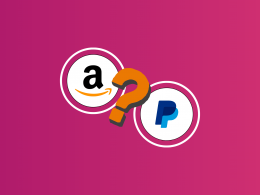EFT payments are widely used worldwide and have become an increasingly popular alternative to traditional payment methods such as checks or cash. This is because EFT payments are faster, more convenient, and more secure than traditional payment methods. For example, with EFT payments, you can quickly and easily transfer funds from one bank account to another without the need for physical checks or cash.
In this blog post, we’ll explore EFT payment meaning, types of EFT payments, how they work, and their benefits and drawbacks. Ready? Let’s dive in!
EFT Payment: What Is an Electronic Funds Transfer?
EFT stands for “Electronic Funds Transfer,” which refers to an electronic transfer of money from one bank account to another. EFT payments can be used for a wide variety of transactions, including online purchases, bill payments, and direct deposits. EFT payments are typically processed through a payment gateway or other electronic payment system, and they can be initiated by individuals, businesses, or financial institutions.
Types of EFT Payments
ACH Transfer
ACH stands for “Automated Clearing House,” and ACH transfers are electronic payments that are processed through a network of financial institutions in the United States. ACH transfers are often used for recurring payments, such as direct deposits of payroll or government benefits, and for one-time payments, such as bill payments. ACH transfers are generally slower than other types of EFT payments, taking several business days to process.
Wire Transfer
Wire transfers are electronic payments sent directly from one bank account to another. Wire transfers are often used for one-time or urgent payments, such as international money transfers or large transactions. Wire transfers are typically faster than ACH transfers, taking only one or two business days to process but are also more expensive.
Online Payment
Online payments are a type of EFT payment that allows customers to make purchases online and pay directly from their bank accounts. Online payments are typically processed through payment gateways, which securely transmit payment information between the customer’s bank and the merchant’s bank. Online payments are a popular option for e-commerce transactions, offering convenience and security. In addition, they are often faster and more cost-effective than traditional payment methods such as checks or cash.
Want to know more about online payments and how to accept them? Check our overview of the best payment gateways.
Debit Card Transaction
Debit card transactions are electronic payments that are processed when a customer uses debit or credit cards to make a purchase, pay for a service, or withdraw cash from an ATM. Debit card transactions are similar to online payments in that they are processed through payment gateways, and, just like online payments, they are usually faster than traditional payment methods.
Mobile Payment
Mobile payments are easy electronic payments that are made using a mobile device, such as a smartphone or tablet. Mobile payments can be made using various technologies, such as near-field communication (NFC) or mobile apps, and they are often used for in-person transactions at stores or restaurants.
Electronic Check
Electronic checks are digital versions of paper checks that are processed through payment gateways and financial institutions. Electronic checks are often used for one-time or recurring payments, such as rent or utilities, and they can be more convenient and secure than traditional paper checks.
Peer-to-Peer (P2P) Payment
P2P payments are electronic payments that are made between individuals without the need for a bank or financial institution. P2P payments are often made using mobile apps or online platforms, and they are popular for transactions such as splitting a bill or paying back a friend.
Overall, EFT payments offer different benefits and use cases depending on the specific transaction. By understanding the differences between these types of payments, individuals and businesses can choose the best payment method for their needs and ensure that their transactions are processed securely and efficiently.
Electronic Payments: ACH vs EFT
ACH and EFT are both types of electronic payments, but they are not the same thing. ACH is a specific EFT payment type used in the United States of America.
The main difference between ACH and EFT payments is that ACH payments are processed through a specific ACH network of financial institutions in the US, while EFT payments can be processed through a variety of networks and systems worldwide.
ACH payments are typically used for recurring payments, such as direct deposits of payroll or government benefits, as well as for one-time payments, such as bill payments. In addition, ACH payments are processed in batches, meaning that multiple transactions are processed simultaneously rather than individually.
On the other hand, electronic fund transfer can refer to any type of electronic payment, including ACH payments, wire transfers, online payments, and more. EFT payments are generally faster and more secure than traditional payment methods such as checks or cash, and they offer greater convenience and cost-effectiveness for businesses and individuals paying for a product or service.
Overall, while ACH is a specific type of EFT payment that is used in the US where there’s a wide ACH network, EFT payments can refer to a wide variety of electronic payment methods that are used around the world.
How Do EFT Payments Work?
EFT payments work by allowing money to be transferred electronically from one bank account to another. The process of making an EFT payment is easy and typically involves several steps:
Step 1. Initiation
The person or organization making the payment initiates the transaction by providing the necessary information to their bank or payment gateway. This information typically includes the recipient’s bank account number, the name of the recipient’s bank, and any other relevant details.
Step 2. Authorization
The payer’s bank or payment gateway verifies that the funds are available and authorizes the transaction. This step may also involve additional security checks, such as confirming the payer’s identity.
Step 3. Processing the electronic funds
Once the transaction has been authorized, the funds are transferred from the payer’s bank account to the recipient’s bank account. The fund transfers typically take a few business days, although it can vary depending on the specific banks or payment systems involved.
Step 4. Settlement of the electronic funds
Finally, the recipient’s bank verifies that the funds have been received and settles the transaction by depositing the funds into the recipient’s bank account.
Throughout this process, EFT payments are typically processed through secure payment gateways or other financial institutions that use advanced encryption and security protocols to protect transaction data. This helps ensure the transaction is secure and the funds are transferred safely and reliably.
How Long Do EFT Payments Take to Clear?
The time it takes for an EFT payment to clear can vary depending on several factors, including the specific payment method, the banks involved, and any processing delays that may occur.
ACH transfers typically take 2-3 business days to clear. Some banks may offer expedited processing for ACH transfers, reducing the processing time to one business day or less. Note that some ACH transfers may take up to 5 days.
Wire transfers, another EFT payment type, are generally faster than ACH transfers. Domestic transfers can be processed within a few hours or less, while international ones may take a few days to clear. Wire transfers are often more expensive than ACH transfers, and they may require additional fees or documentation, so you’re charged for additional service.
Online payments, a popular EFT payment for e-commerce transactions, can typically be processed within minutes or hours, depending on the payment gateway and the banks involved. As a result, online payments are often faster than traditional payment methods such as checks or cash, and they offer greater convenience and security for customers and businesses.
What Are the Benefits of EFT?
There are several benefits to using EFT payments.
Convenience
In comparison with other payments, EFT is very convenient – it can be initiated and processed electronically, eliminating the need for physical checks or cash. This means that payments can be made quickly and easily, and funds can be transferred between accounts without the need for a physical trip to the bank.
Speed
EFT payments are typically faster than traditional payment methods, such as paper checks, which can take several days to clear. EFT payments can be processed within minutes or hours, depending on the specific payment method and the banks involved.
Cost-effective
EFT payments can be more cost-effective than traditional payment methods because they eliminate the need for paper checks, stamps, envelopes, and other associated expenses. This can be particularly beneficial for businesses that process large volumes of payments, as it can save them time and money.
Improved cash flow management
EFT payments can help businesses manage their cash flow more effectively because funds are transferred faster than traditional payment methods. This can help businesses predict and plan their finances better, reducing the risk of cash flow issues.
Want to predict your finances better? Check out our article on financial forecasting.
Security
EFT payments are generally considered to be more secure than traditional payment methods because they eliminate the risk of physical checks or cash being lost or stolen. EFT payments are typically processed through secure payment gateways or other financial institutions, which use advanced encryption and security protocols to protect transaction data. However, there’s no 100% insurance, which is why security is a benefit and drawback at the same time.
What Are the Drawbacks of EFT Payments?
While there are many benefits to using EFT payments, there are also some potential drawbacks that should be considered:
Security risks
While EFT payments are generally considered to be secure, there is always a risk of fraud or security breaches, mainly when using unsecured networks or unreliable payment gateways. In addition, hackers or other bad actors may attempt to intercept or steal EFT payment information, which could result in unauthorized access to bank accounts or other financial information.
Technical difficulties
EFT payments can sometimes experience technical difficulties, such as network outages or processing errors, which can result in delays or other issues. This can be particularly problematic for businesses that rely on EFT payments for their cash flow or inventory management.
Limitations on types of transactions
EFT payments may not be suitable for all types of transactions, particularly those that require physical checks or cash. For example, some landlords or businesses may prefer to accept paper checks for rent payments or other transactions.
Processing fees
While EFT payments are generally more cost-effective than traditional payment methods such as paper checks, wire transfers, or money orders, they may still be subject to processing fees or other charges depending on the specific payment method or the banks involved.
Lack of consumer protection
Unlike credit card transactions, EFT payments do not offer the same level of consumer protection in the event of fraud or other disputes. This means that customers may be more vulnerable to losses or disputes when using EFT payments.
Overall, while EFT payments offer many benefits over traditional payment methods, it is essential to consider the potential drawbacks and to use reputable payment gateways or financial institutions to ensure the security and reliability of your transactions.
Conclusion
In conclusion, EFT payments are an important and increasingly popular electronic payment method, offering numerous benefits over traditional payment methods. Whether you are an individual or a business, using EFT payments can help you save time, money, and hassle. However, it is crucial to consider the potential drawbacks and security concerns associated with EFT payments and to use reputable payment gateways and financial institutions to ensure the security and reliability of your transactions.
Are you an e-commerce business owner who wants to manage your accounting better and have a powerful source of truth for your sales channels and payment gateways? Try Synder Sync to automate data synchronization and get rid of manual data entry! Connect all your platforms in use with your accounting via Synder and enjoy! Discover what Synder Sync has to offer during our 15-day free trial, or join our free webinar to get a guided tour of the solution with our specialist. Save time and simplify the way you do accounting!








.png)
